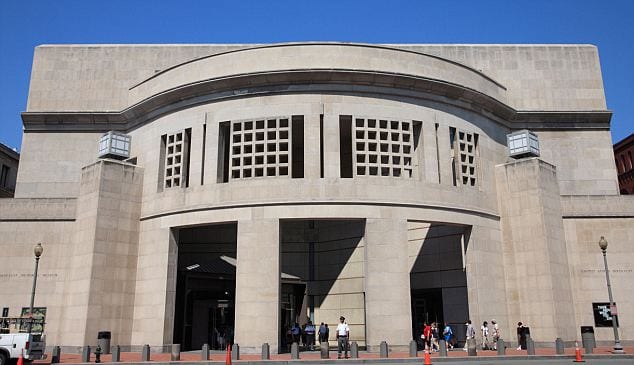By Sujin Kim ’18, Marketing and Communications Student Intern
On October 15, the junior class took its annual trip to the nation’s capital. The Washington D.C. trip is an 11th grade tradition organized by the 11th grade history teachers: Mr. Thomson, Ms. van Tijn, and Ms. McFeely.
The focus of the trip was a visit to the U.S. National Holocaust Memorial Museum. Upon entrance, we were each given an “I.D. card.” Each card was the profile of a Holocaust victim or survivor, some of whom are regular volunteers at the museum. During our time visiting the exhibits, we were asked to remember the people whose identities we held, and to remember that the Holocaust was not just something we learned about in history, but a massive genocide that affected millions of real people just like us. The first part of the exhibit displayed Nazi uniforms, along with videos about Hitler’s rise to power. The most jarring propaganda were the children’s books. The Third Reich built their following through the German youth, brainwashing children from as young as three years old. The picture books promoted anti-semitism, homophobia, and other forms of intolerance with violent, colorful illustrations.
The next exhibit floor held pieces from the concentration and extermination camps. A large iron sign that had previously hung above the entrance to the Dachau extermination camp mockingly read “arbeit macht frei” or “work will set you free.” The exhibit also had a freight train car that victims had been forced into on their way to their deaths. We walked through the train car, and wondered about the pain that had been endured in that train car. As we continued through the exhibit, we saw yellow Star of David patches Jewish people had been required to wear, papers from the Nazi Jew registry, striped prisoner uniforms, bunks from the camps, and an enamel bowl and spoon with a placard describing how those items had been the most coveted items among the prisoners.
However, the most moving and disturbing pieces by far were the items from the extermination process itself. We saw piles of hair that had been cut from the victims after their deaths, shoes that had been stripped from their owners, cans of Zyklon B pellets, the toxic gas used in the death chambers, and the cremation ovens from Dachau extermination camp. Seeing the hair that had been chopped from the dead bodies, the shoes that had been so savagely torn away, and especially the ovens where the victims came to their final resting places, was incredibly emotional. Seeing the items first hand reminded us that the Holocaust is not an ancient event that only exists in our textbooks; it showed us that it was horrifying, monstrous genocide that killed millions of innocent people. Visiting the Holocaust Memorial Museum reminded us to keep the memories of the millions of victims alive, and to work to fight intolerance and bigotry in their honor.
The trip is closely tied to the 11th grade history curriculum: 20th century world history and AP United States History. Both the 20th century courses and the AP course study World War II and the Holocaust in depth.

